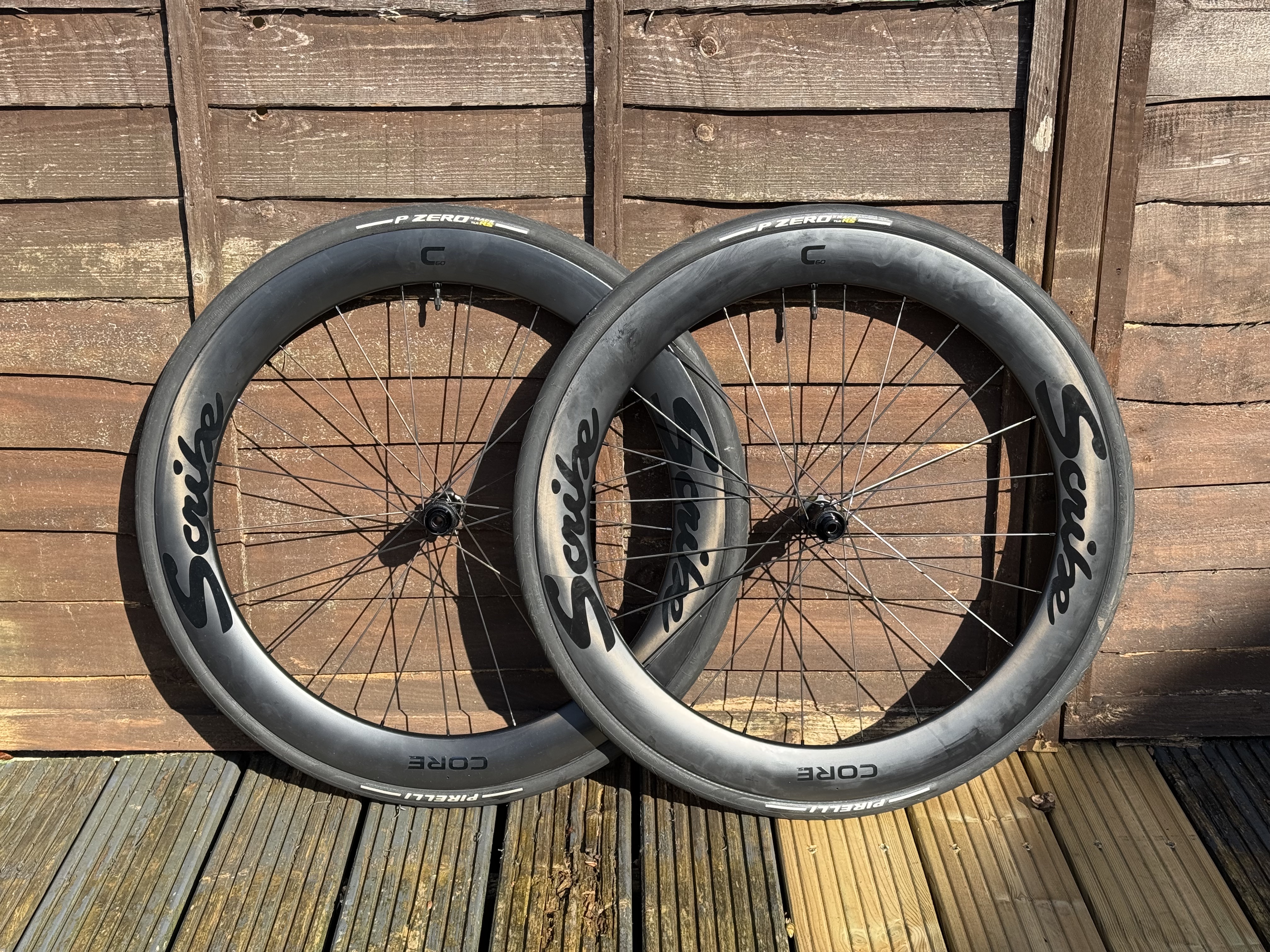
Price: £999 / €1199 / $1199
Weight: 1419g claimed, 1434g measured
Hookless: No
Depth: 60.91mm
Width: 21mm int, 29.07mm ext
The Scribe Core SL 60 wheelset represents the brand's budget offering when it comes to its elite range of wheelsets, including the Core SL, SL rim brake, and Élan SL models.
Coming in at under £1,000 for a standard wheelset, the Core SL come in at a price that pits them against more value-friendly carbon wheelsets, for those wanting to look for high performance on a budget compared to the more high-end offerings.
Impressively though, from our own independent wind tunnel testing, we found the Core SL 60 to be one of the best performers when it came to aerodynamics as well as having a competitive weight when pitted against £3000+ super wheels.
Add to that an asymmetric spoke lacing designed to balance the wheels based on the forces they experience, and the wheels are strong performers out on the road too. Customisation at the point of purchase and an array of customer support and care benefits make these a very enticing wheelset not just for those on a budget, but for anyone looking for a higher-performance wheelset full stop.
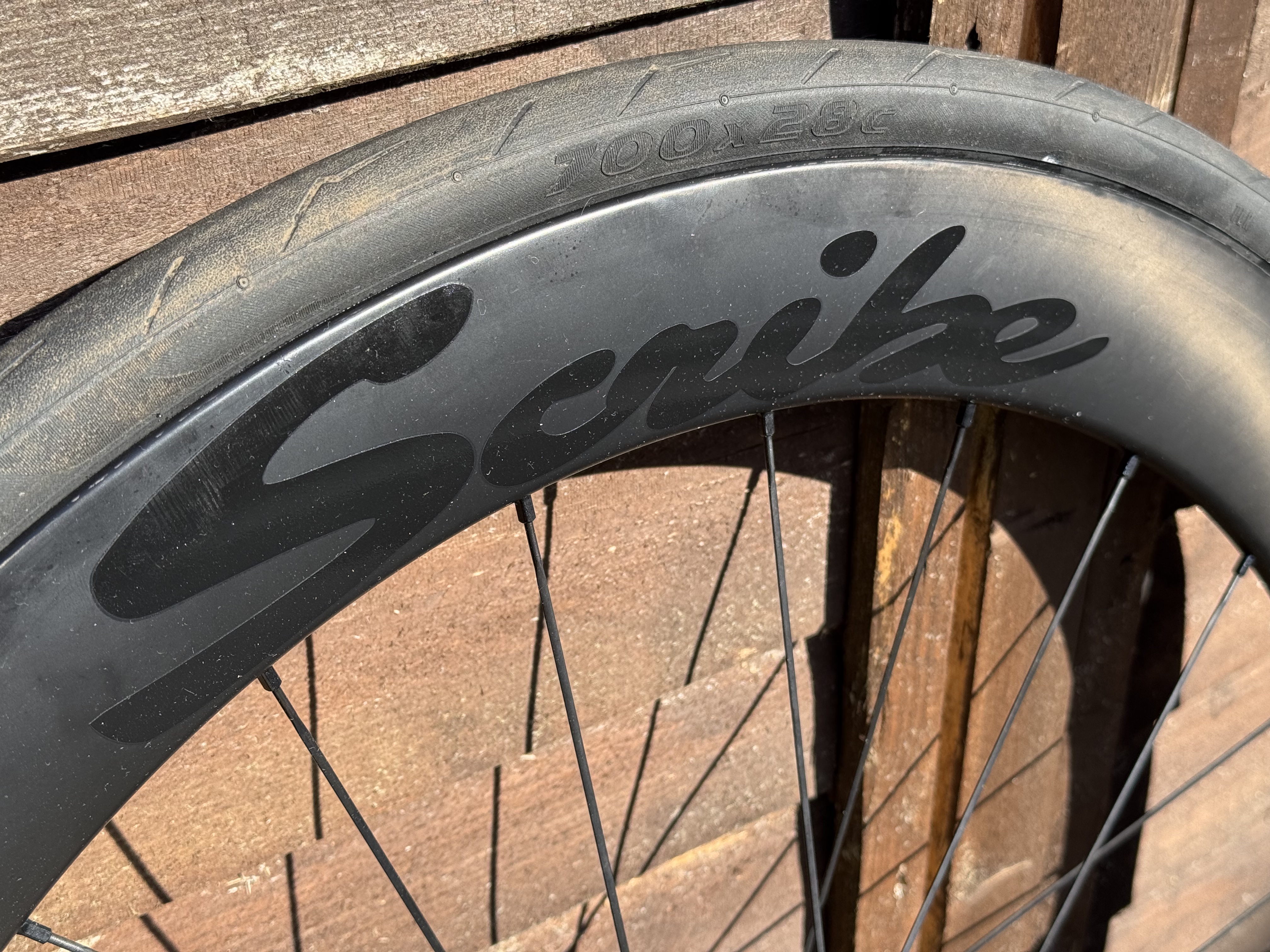
Design and specifications
The foundation of the Scribe Core SL wheels are the rims. These are made up from T1000 carbon fibre, which is regarded as one of the highest quality forms of carbon fibre to use in sports equipment. T1000 is essentially higher-modulus than T800, also used in cycling components.
Higher modulus resists deformation under load better than a lower modulus offering, making it very stiff. The idea is that for the same weight of T800, T1000 is stronger, or for the same strength as T800, T1000 is lighter.
This rim is also nicely up to date, albeit not progressive, in terms of its dimensions, with a 21mm internal width and 29mm external. A special SL+ option is available with 24mm internal and 32mm external for even wider tyre optimisation.
The idea behind the 29mm external width was to accommodate tyres between 25-28mm, the most commonly used in road racing over the last few years, as tubeless and wider tyres have become commonplace.
Scribe designed the rims using computational fluid dynamics (CFD) and wind tunnel testing to ensure that their performance was ideal across the range of speeds and wind angles most commonly encountered during road cycling.
The brand provides some testing data comparing the Scribe Core SL 50 wheels to Roval Rapide 50mm and found that at all wind angles, the Core SL were faster from 0-12 degrees yaw. However, no testing speed is given, nor is an exact watt figure for savings.
With that said, we did test these in the wind tunnel ourselves, as linked above, and will share some of that data later in the review.

Another area of these wheels that shares the same design as the brand’s higher range Elan SL wheels is the hub. Scribe have followed most wheel brands in implementing a ratchet drive system into their hubs after the patent on the DT Swiss Star Ratchet expired.
This uses fewer parts than traditional hub pawls, meaning longevity should be higher and maintenance lower. Basically, two ratchets are pushed together by springs, so when freewheeling, they glide over each other, but when pedalling, they engage and create a large contact point.
Two options are available for the wheels, with a 36-tooth engagement or a faster-engaging 54-tooth option. This fractionally changes the degrees required to pedal before the ratchet engages, from 10˚ down to 6.6˚. The gain here is more immediate acceleration, but it can lead to slightly higher friction when coasting and smaller teeth are slightly weaker and potentially less durable.
Hub options include Shimano road, SRAM XDR, and Campagnolo 9-12 speed. Axles can also be customised for 12mm road thru axles, quick release, or 15mm front axles to suit most road bikes.
The freehubs also feature two stainless steel plates across the length of two of the splines to prevent the cassette biting into the freehub body - a small but neat addition which should aid durability.
Bearings in the hub are the brand’s TPI stainless steel endurance bearings. They use contact seals externally to prevent water ingress and improve longevity, and non-contact seals internally to reduce friction. Race and Ceramic bearing options are available and use non-contact seals to optimise rolling resistance at the expense of longevity and require more maintenance.
The final part of the wheels, and the component that sets them apart from the Elan SL, are the spokes. The Elan uses carbon-bladed aero spokes, while the Core SL uses Sapim CX Ray aero spokes at a slight weight penalty and potential stiffness penalty as well.
The spoke lacing, however, is the same between the wheelsets and uses a 2:1 ratio of 21 spokes front with three-cross lacing on the rotor side and radial lacing on the non-rotor side.
The rear also uses a 2:1 ratio but 24 spokes with one-cross non-driveside and three-cross driveside. The idea of the asymmetric spokes is to do with where forces are applied to the wheels. During braking, the rotor side experiences more force, which applies in a twisting fashion. The cross-laced pattern and greater spoke count aim to offset this force and make the wheel react in a more symmetrical way, with the non-rotor side having fewer spokes.
This is the same at the rear, but then the drive-side experiences greater forces again when accelerating and putting out power. This is why the rear wheel has a greater spoke count as well as cross-lacing on both sides.
Performance
First and foremost, as with any set of wheels, is the question of how easy they are to set up. Tubeless has sometimes been a bane of the setup process for some users, but the Scribe Core SL 60 performs well in this regard.
I’ve tested a lot of wheels and tyres recently, and to try and keep things as objective as possible, I’ve used Pirelli’s P Zero Race TLR RS 28mm tyres with all these wheels. Fitting the tyres to the Scribes was pretty easy, no overly high levels of effort required to fit the tyres, while a track pump and a removed valve core was plenty to get the tyres seated and ready to ride.
Disc rotors and cassette were equally easy to fit, and the tyres measured at 28.72mm wide.
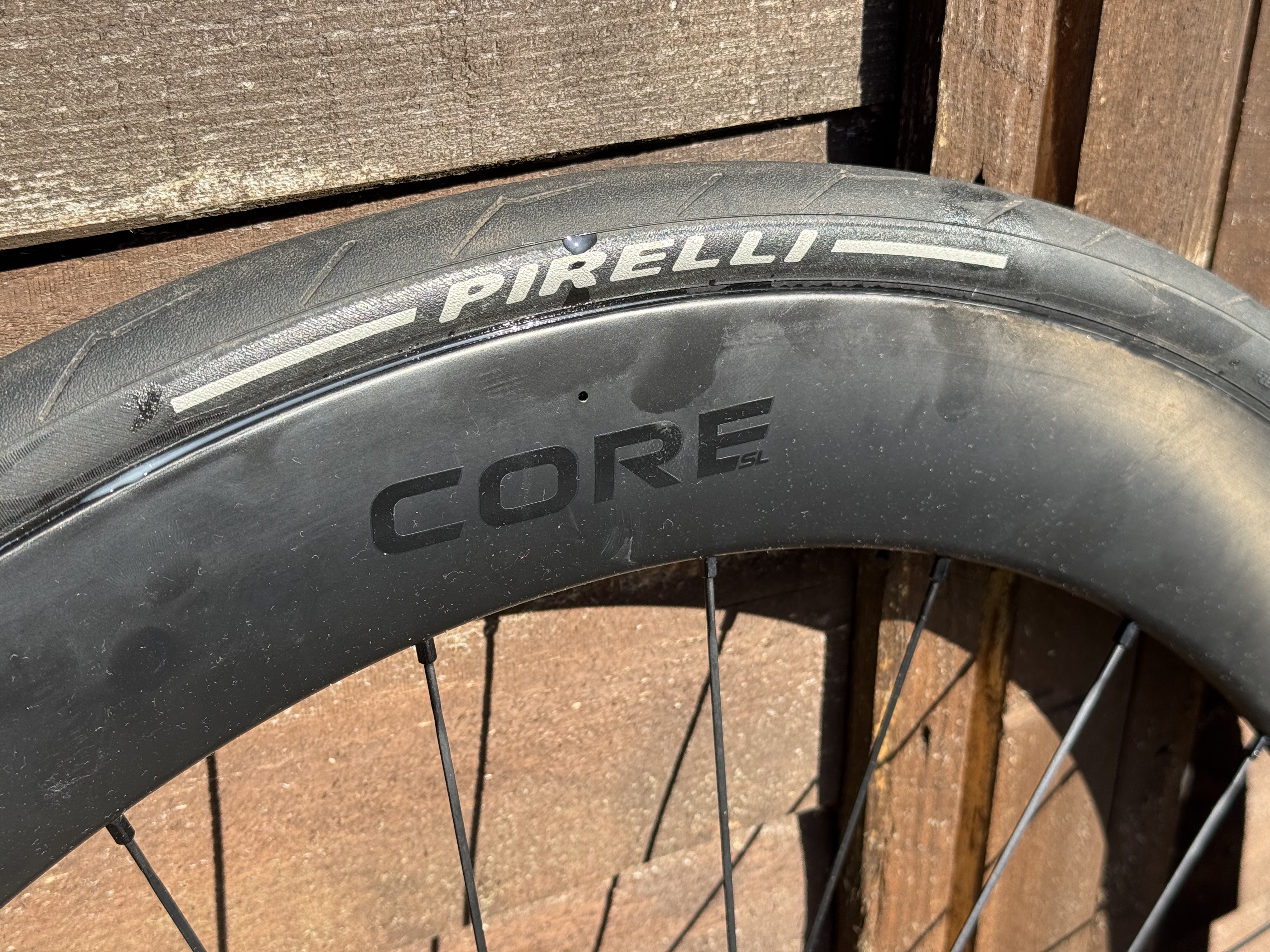
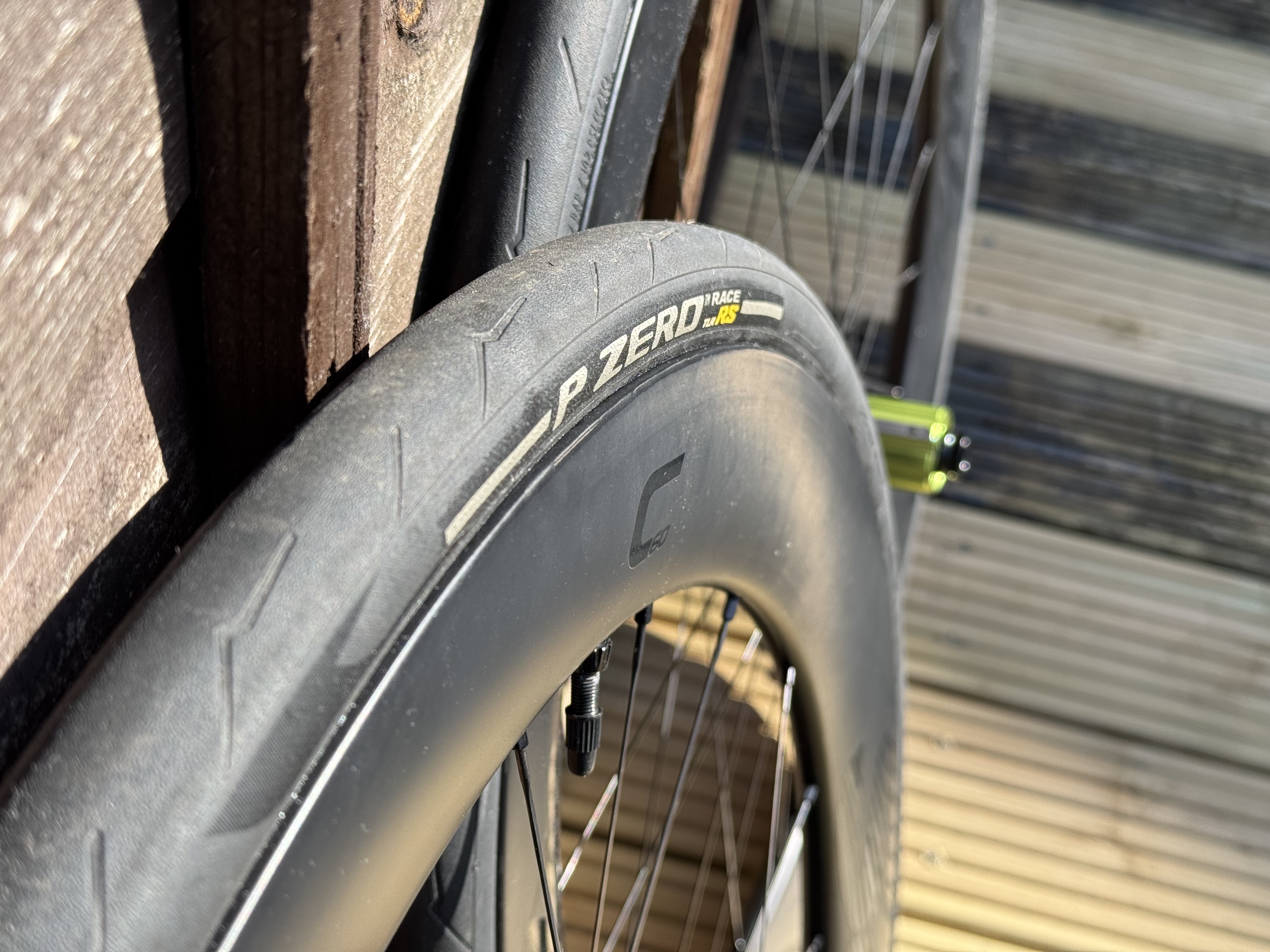
Setting off on the wheels, there are a few things that are noticeable straight away. Firstly, 60mm wheels can catch the wind, and secondly, these are an incredibly lively set of wheels.
This is likely down to two key factors: the relatively low weight for a wheelset this deep and the way that the spokes are laced.
Both wheels use a 2:1 ratio, meaning there are more spokes on the sides where forces are greater. For the front wheel, this is on the rotor side, while on the rear wheel, this is on the driveside.
The combination of multiple cross lacing, asymmetric spoke count, and straight pull spokes appears to have worked brilliantly to create a set of wheels that is wonderfully balanced across the board and how they respond to acceleration, braking and cornering forces.
For example, the Core 60s get up to speed from a standing start beautifully well, while braking suddenly is also reactive and predictable.
I’ve encountered some cases where the pursuit of aero and reducing spoke count at the front has led to a wheel feeling disconnected during heavy braking and cornering, which ruins confidence in the wheels. But here, cornering is another area where the Core 60 perform brilliantly. I've been back-to-back testing these against other wheels, using the same tyres at the same pressure to try and standardise these perceptions, and there's zero disconnect here.
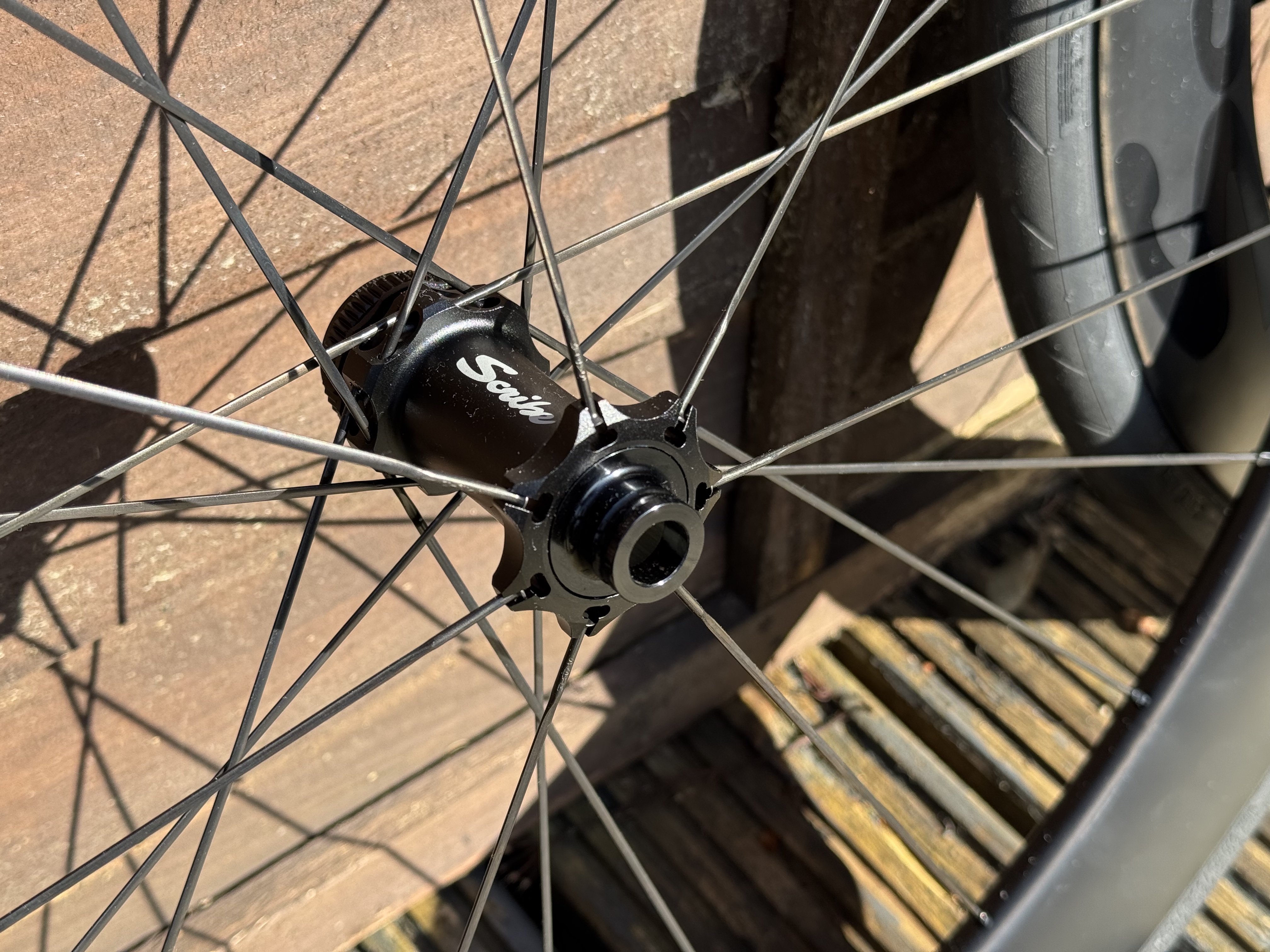
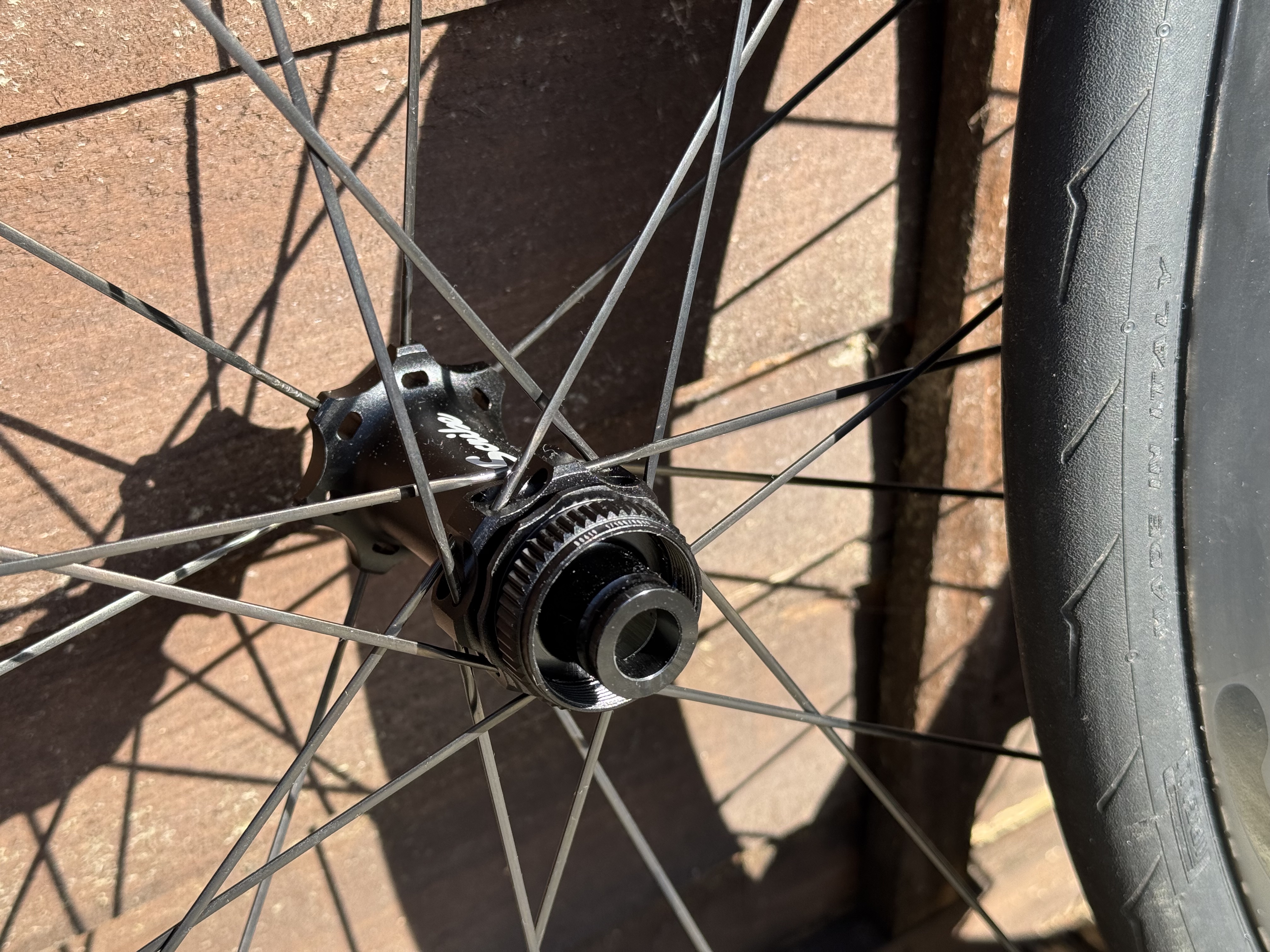

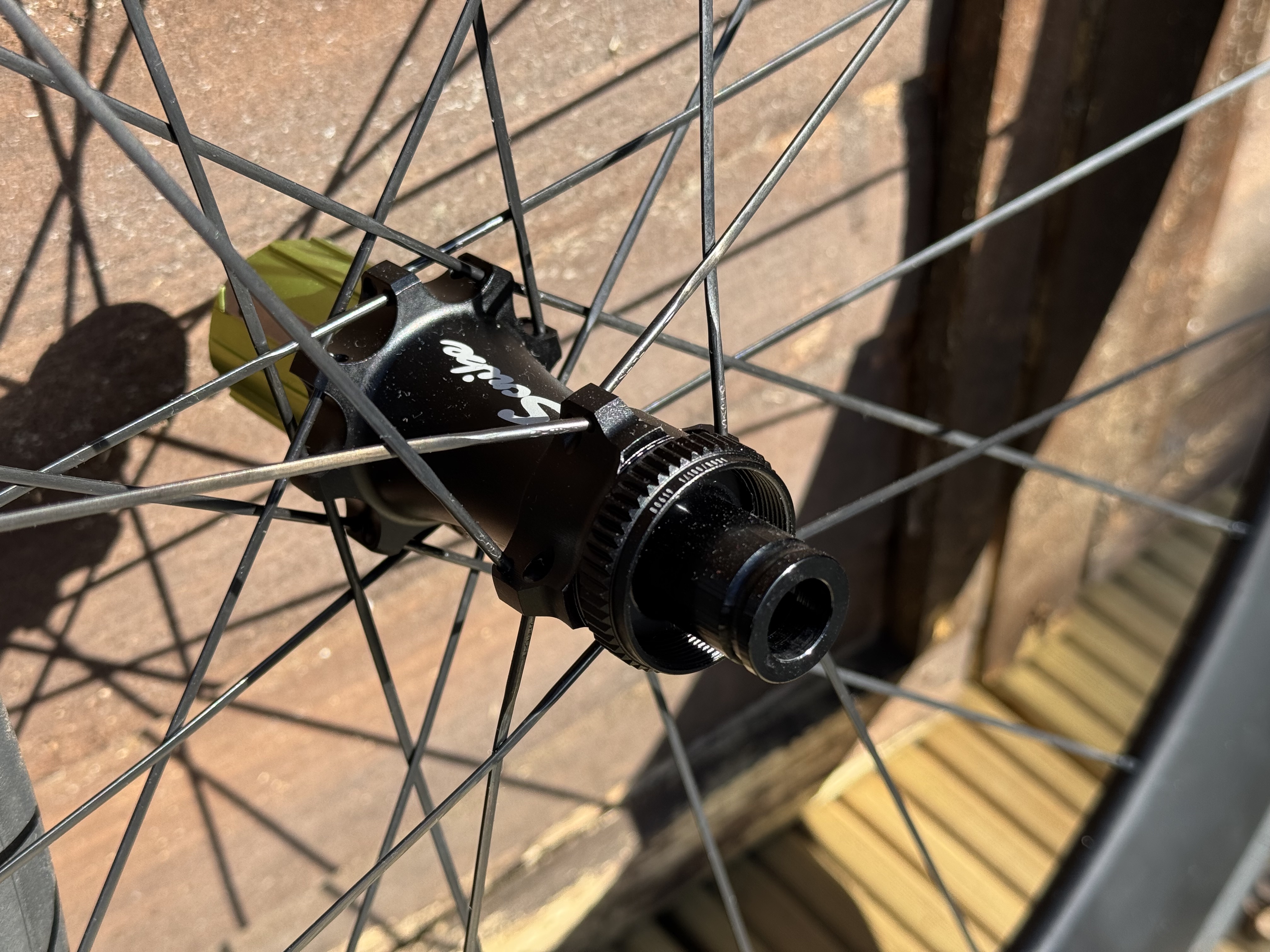
Another benefit of this stiffness and low weight is that the wheels do not feel cumbersome on steeper inclines. For the most part, when climbing, unless it’s steeper than 10% gradients, weight doesn’t have a huge impact, especially not a couple of hundred grams while riding at a consistent pace. Where things change are during accelerations, especially on steeper inclines.
Again, the Scribe wheels were no slouch here, and although not as fast to spin up as some more featherweight alternatives, those alternatives are either more than double the price for the same depth or significantly shallower wheelsets.
That’s the impressive thing with these wheels, they are 60mm deep but do not feel that way when climbing. Where the Scribes do feel like a 60mm set of wheels is on the flat. I was slightly surprised by just how well they hold speed, regardless of which direction the wind was coming from.
Cruising around at 35kph was pretty relaxed, and in a few instances, I would get up to 60-70kph on relatively short downhills where I wouldn’t generally expect to.
Obviously this says very little scientific data about how aero the wheels are, but only backs up the data from their wind tunnel performance when we tested them as part of a large group test.
In that test, we found that generally the more expensive a wheelset, the better it performed in the wind tunnel, with one exception, the Scribe Core SL 60.
They were 6th fastest at 30kph, 5th at 40kph, and 4th at 50kph, surrounded by wheels all over £2k and sometimes even more than £3k. At their worst, they were less than 2w slower than the top-performing wheel, which at 50kph is negligible.
Admittedly, the differences weren't huge between wheelsets, but the Scribes were also some of the lighter 60mm wheelsets, and easily the most affordable. I doubt that, when cruising at speed, these would feel any different to the best-performing wheelset, but it’s good to see quantifiable data to confirm my perceptions.
There is one area where these wheels arguably are not the best, and that is crosswinds. It is worth bearing in mind that at a certain level of wind, any 60mm front wheel is going to feel less planted than a shallower set. Gusts of wind did catch the Scribes, but they did react in a predictable manner, and were not bashed around by the wind in a manner that would cause concern.
I am 190cm and 75kg, though, so lighter riders may want to opt for a shallower front, something that Scribe does offer with a 50/60 combination.
One small gripe I have with these wheels is that they're only available in a matte finish. With the gloss logos, they look good, but the matte finish shows sealant stains and fingerprints from fitting the tyres, so they're hard to keep clean. I personally prefer a gloss finish, but this is personal preference and nitpicking.

Other elements that I really appreciate but didn’t exactly have the time to test, were things more focussed on durability. The freehub body features two steel inserts onto the machined aluminium, this is designed to stop the cassette biting into the freehub and causing damage over time.
Contact-sealed bearings are used externally to reduce the chance of water or dirt ingress, while non-contact bearings are used internally to reduce rolling resistance.
This can be changed either for non-contact race bea,rings or ceramic ones, again to reduce rolling resistance but at a cost of durability. Finally the new ratchet system is available in different tooth options, with a 36 or 54 points of engagement.
There is some debate that a higher tooth count can reduce longevity as they are often smaller and potentially weaker, but again, there are options for what sort of riding you want to use these wheels for.
Given there aren’t many occasions where I coast into an acceleration, and the 3.4˚ difference in engagement rate is smaller than a hundredth of a second when going at 90 rpm, I was very happy with the 36t.
This new ratchet system is also designed to be longer-lasting than traditional pawl-freehub systems, with fewer moving parts that are more easily serviceable. I’m a big fan of wheels being both customisable to suit riding style, as well as a focus on longevity, should you want that.
Finally, the customer support and care for the wheels is something that should put buyers at ease when investing nearly £1000 on a component for their bikes.
The brand's Infinity Warranty programme has a three-year warranty against material or workmanship defects, while the Infinity Wear and lifetime crash replacement allow crash-damaged wheels to be repaired at 50% off replacement costs.
Add this to the ReGen trade-up offer, which allows old wheels to be sent back in exchange for a discount on a new set, and there is an array of great customer support options and benefits. Other brands offer similar schemes, such as Hunt, but it can be harder to find with higher-end brands, so it gives a good incentive to try from a less established brand.
Value
This is quite possibly the area where the Scribes perform at their very best. £999 for a set of carbon wheels is pretty decent from a named brand with warranty support. There are cheaper options from online companies with unbranded carbon wheels, but they often lack the assurances of testing and warranties to give you faith in how they will stand the test of time.
When it comes to the Scribe Core 60 SL, their main competitors are likely from Hunt and Parcours, which offer several wheels in a similar price bracket.
We tested the Hunt Sub 50 Limitless, a slightly shallower wheel, coming in a shade lighter and less aero in our testing. However, this is one of their more expensive offerings at £1849. The more comparable wheel we tested was the Parcours Strade, 49/54mm deep front and rear. A touch heavier, and slower in the tunnel, plus the £1099 price is slightly more expensive. The Scribe really do win out when it comes to similarly priced wheels.
Where things get more impressive is when you broaden the price range of competitors to include some heinously expensive wheelsets. The Princeton Carbon Works Wake 6560 Evolution are £3200, yet only fractionally lighter, and tested slower in wind tunnel testing at all speeds than the Scribes. Although with the caveat that we tested with 28mm tyres, where the Wakes are designed to be fastest with 25mm.
Several £2000-plus wheelsets were also both slower in the wind tunnel and also a similar weight. The only wheelsets that outperformed the Scribes, both in terms of aero at every speed and weight, were the Scope Artech 6.A (£3498), Syncros Capital SL Aero (£4200), and the Enve SES 6/7 (£3350).
However, both aero performance and weight were mostly only fractionally better for these three wheelsets, with each costing at least three times as much.
Given the performance-to-cost ratio, the Scribe Core SL 60 wheelsets are arguably in a league of their own. They can perform with the halo wheelsets that cost more than a full bike build, and at a fraction of the cost.
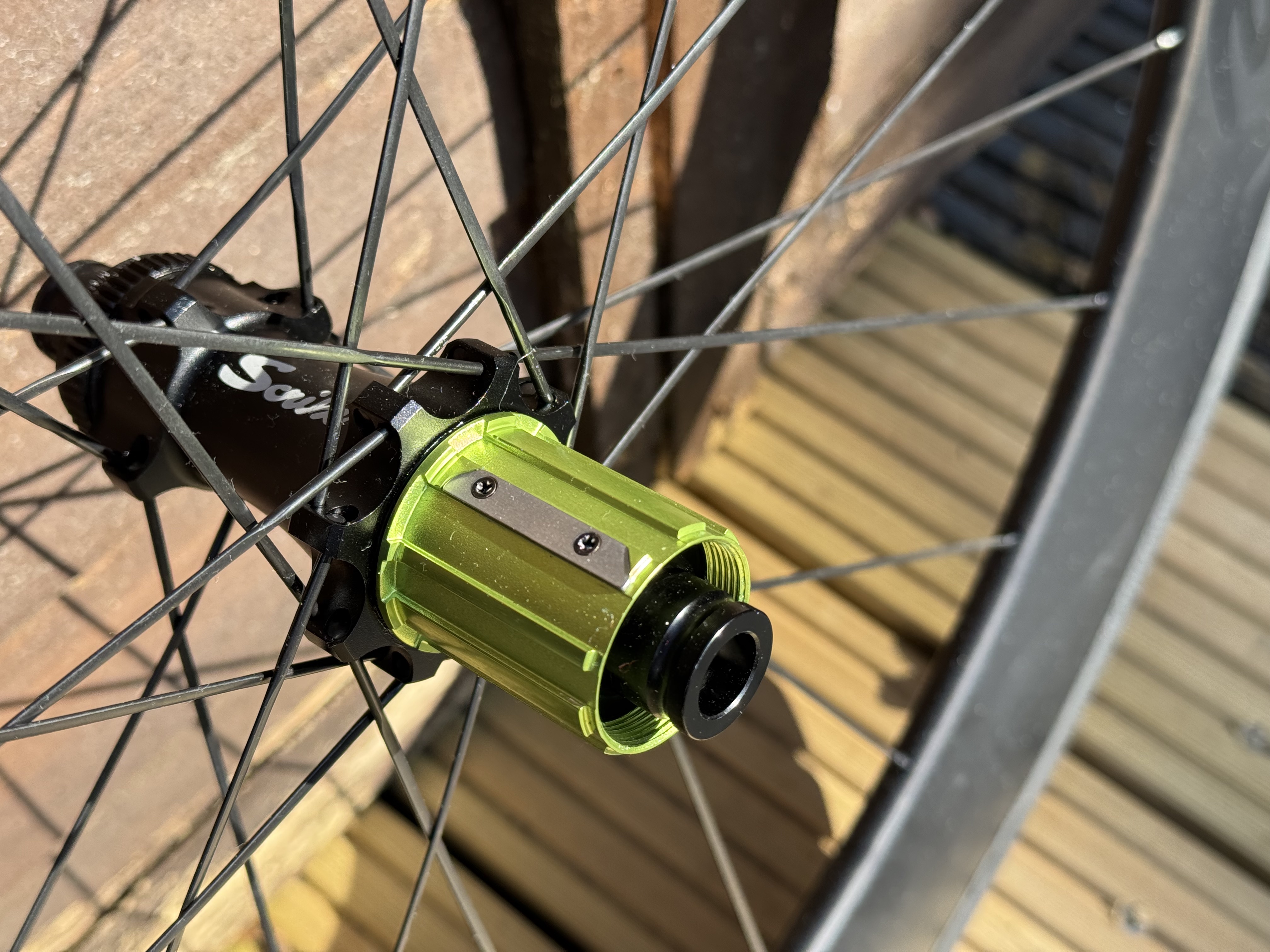
Verdict
The Scribe Core SL 60 have really impressed me as a wheelset that is able to perform impressively in and of itself, but also does so at the same level as offerings that cost between three and four times as much.
Weight and aero performance are both verified as being up there with some of the top performers available. But where these wheels equally excel is in how they are built and ride. Modern rim size offerings work well with 28mm tyres, and they balance forces brilliantly.
They feel stable and responsive when braking, cornering, and accelerating, leading to a wheelset that feels spritely and reactive, whatever you throw at it.
They can catch the wind when it gusts, but most 60mm rims will do that. The Scribes, however, do not react in an unruly manner and are instead controllable and confident.
Shallow and lighter wheelsets can spin up to speed on steep climbs more effectively, but over the course of almost any longer ride, the aero benefits will outweigh weight savings. Given the 60mm depth, the Scribes are a competitive weight, which is noticeable on the road.
Add in durability-enhancing features, plus the option to change these for maximal friction savings at the expense of durability, and there is a good degree of customisation as well as longevity to these wheels.
Customer support and care promises to help with that further, resulting in possibly the most complete package for a carbon aero set of wheels you can buy.







